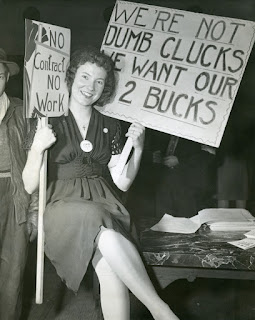In many sectors, the relationship between management and workers is strained. In thinking about the importance of Labor Day in the United States, I searched for images that help describe-- visually-- something about the history of organized labor.
A member of my family was an employee of Crozer-Chester Medical Center (now Crozer-Keystone) for over four decades. My first understanding of organized labor came when my family member went to the picket line, over compensation and working conditions. Crozer-Keystone has been widely criticized for chronically overcharging its patients.
The history of the labor movement in Vermont is a fascinating subject: Italian immigrants settled in Barre, working the quarries and granite sheds. Anarchists Saco and Vanzetti spent time in Barre.






















